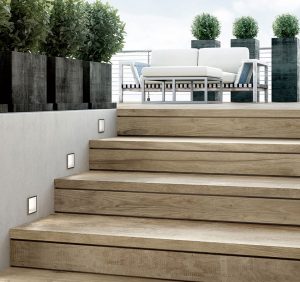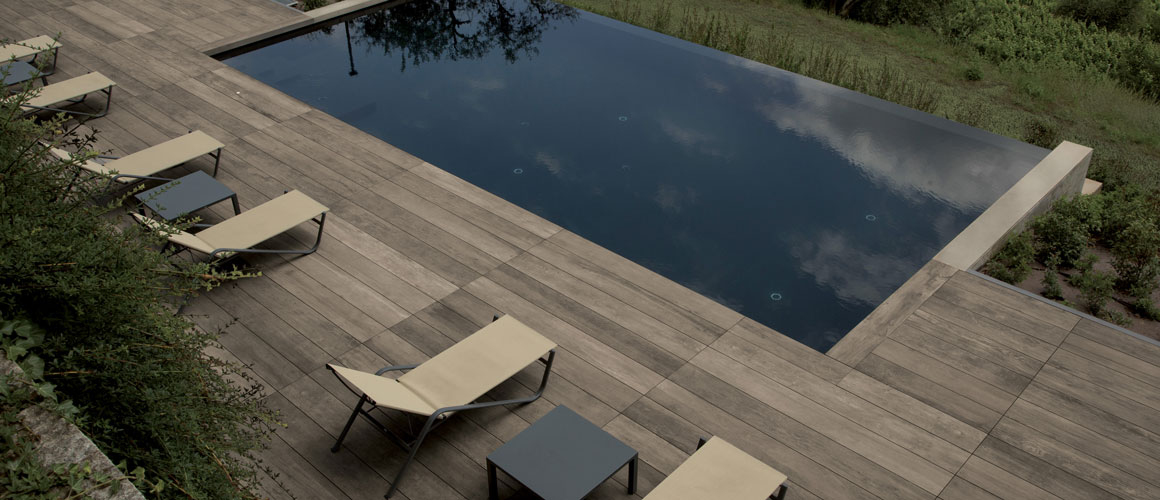Whether you’ve just purchased a property, or have lived in your home for years, you may be considering a garden renovation. There are a variety of reasons why you may choose to redesign your garden space, perhaps to improve functionality or to increase the overall value of your home for future saleability purposes.
Whatever your reasons, a full garden redesign can be daunting. How do you decide where the new elements should go, and how do you pick the best materials for your project?
Of course, you could consult a professional landscape architect to gain expert insight into the prospective design of your garden, but if you’re looking to manage the project yourself then look no further, as we’ve compiled a step-by-step guide to planning your garden renovation.
Step One: Draw A Plan
To get a proper feel for the size and shape of your garden, draw a sketch of the dimensions and existing architecture on graph paper – simple lines and annotations will do.
Add any important measurements, such as the length and height of each wall or fence, as well as any changes in depth, such as lowered or raised areas of flooring. Be sure to add in the location of any doors, gates or other existing features that you plan to keep in your final design and any non-moveable items such as drains.
This plan will form the basis for your design. It can be much easier to visualise with a physical reference, making any conflicting measurements, or more complicated ideas much easier to pick up on.
Step Two: Determine Your Wants And Needs
Everybody has a different preference for their garden space, and what you want to achieve is an important decision to make at the start of the design process. When it comes to planning out your space, knowing what elements you wish to incorporate early on is vital.
Your goal may be to curate a space for relaxation or entertaining guests, or you may want your design to encompass as many child friendly elements as possible to maximise their enjoyment of the space. If the space is to be tailored towards family usage, then the overall safety of the garden is also likely to be at the forefront of your mind.
Those with larger garden spaces may wish to include a structural element, such as a garden room that can provide extra entertaining or work space.
Garden rooms can really boost the value of your home but need to be considered early in your plans to ensure that the rest of your garden design can complement the architecture of your chosen structure, and fit well into the remaining space.
Step Three: Selecting The Hardscape Elements
The hardscape elements within your garden design are any non-living, hardened elements such as paths, patios and decking.
These elements are often used in the base of your garden design. Many aspects of your garden can be quickly switched up in the future without the need for a full renovation, but the hardscape elements are likely to remain for a substantial period, so the longevity of your chosen material is very important.
Natural materials tend to require regular maintenance, such as timber decking boards or stone paving slabs, meaning continuous upkeep is required after the primary installation.
With materials such as these, you may also find natural variations in the patterns, such as blotches and other imperfections.
Another concern is safety: timber is susceptible to splintering, meaning it isn’t always barefoot friendly, and it can also become slippery when wet. As for stone slabs, you run the risk of the surface of each slab not being perfectly smooth and level, again raising a safety concern.
An attractive flooring alternative is porcelain decking planks. Porcelain is inherently strong, so is a perfect contender for hassle free garden spaces.
With a low slip risk in all weather conditions and little-to-no upkeep required after the initial installation, porcelain decking planks could be the perfect investment for your garden space.
Dura Composites’ new porcelain decking product, Dura Deck® Inspire, is designed for easy installation. The planks are expertly crafted to mimic the look and feel of traditional timber decking, but there’s no worry of damage from the elements since porcelain decking is resistant to fire, as well as to UV damage and fluctuations in temperature. Whatever your wants and needs for your garden, porcelain decking planks could provide the ideal flooring solution.
Once you’ve decided on what material(s) you wish to use for your hardscape elements, as well as where they will be positioned within your garden, you’re ready for the next step.

Step Four: Create A Focal Point
Creating a focal point for your garden design is a great way to draw the eye towards a visual centrepiece, providing a sense of balance and pulling the overall design together. A strong focal point can also help your garden space appear larger than it is. What you choose to be your focal point will highly depend on the wants and needs you determined earlier.
If you consider yourself green-fingered, creating a space in which you can grow fruit, vegetables and other plants and flora is a great idea. You may wish to incorporate different vegetable planters or areas for various potted plants. Depending on what you hope to grow, a greenhouse could also be a useful addition.
You may be aiming to create a serene space, perfect for relaxation and personal enjoyment. In these instances, your chosen focal point could be a water feature, a fire pit, a bird bath or a decorative bird feeder.
Your priorities may be to entertain your household as well as any guests. For this situation, you may choose to have an outdoor kitchen installed, or for a smaller project, a BBQ. These will act as strong focal points that also bring functionality to the space.
If you have children, your priorities for your garden may be completely different to the above. You may wish to include a play area, with a swing set, a sand pit or a summer house.
Step Five: Additional Decor And Lighting
At this point in the design process, the main aspects should be complete. With structural elements decided upon and a focal point chosen, you can begin with the additional elements of the decor. Again, what you choose to implement here will entirely depend on the purpose of your outdoor space, but you can use these features to express yourself and add a touch of your personal style to your garden.
Many homeowners choose to add a furniture suite or table set to their gardens. You should consider beanbags or a hammock for a more relaxed style or stick with a set of loungers and chairs for a communal, yet comfortable feel.
From here you can add colour and texture through complementary accessories, such as cushions, throws and rugs. You may wish to install a large umbrella or gazebo to protect the area from harsher sun and rain.
For art lovers, incorporating some artwork such as sculptures or hedge designs can be a great way to add some artistic flair to your space. If you’re trying to keep your garden design within the organic, natural theme, you may focus more on additional plants, flowers or trees.
The final consideration is lighting. If you’ve redesigned your garden with the plan to utilise it all year round, you may want to experiment with different lighting types to ensure that the space is usable at any time of the day. Try incorporating a variety of different lighting, such as string lights, festoon lights, floor lamps and solar powered lanterns to see what best complements your design.
Step Six: Enjoy!
A full garden renovation is a hefty job that is likely to take a fair amount of time and money. However, once it’s complete, you’re free to enjoy your new space. Getting started with your design plans early on in the year means that you have more summer time to enjoy the warm weather and lighter evenings.
Design the garden of your dreams in 2023.
Lee Cavalier is Decking Product Manager at Dura Composites, an award-winning manufacturer and supplier of composite and porcelain decking.







